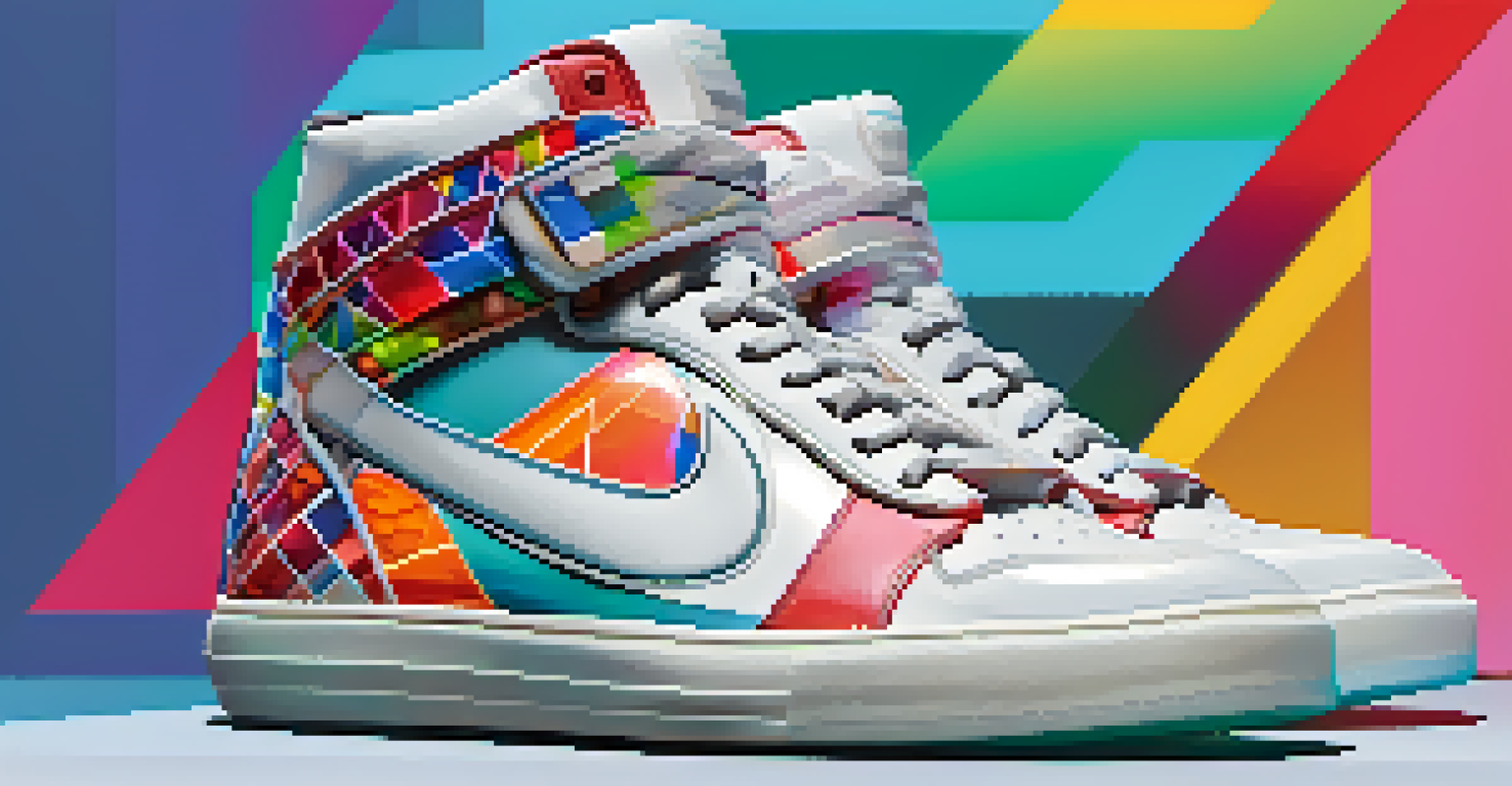The Role of NFTs in Modern Digital Marketing Campaigns

Understanding NFTs: What They Are and How They Work
NFTs, or non-fungible tokens, are unique digital assets verified using blockchain technology. Unlike cryptocurrencies, which are interchangeable, each NFT represents a one-of-a-kind item, whether it’s digital art, music, or even virtual real estate. This uniqueness gives NFTs an intrinsic value, making them particularly appealing in the digital marketing landscape.
NFTs are a new frontier for brands, allowing for deeper connections with consumers through ownership and exclusivity.
In essence, NFTs serve as a digital certificate of ownership, allowing creators and brands to authenticate their products. For example, artists can sell digital artworks as NFTs, ensuring that each piece is original and owned by a specific buyer. This concept is reshaping how brands can engage with their audiences by providing a sense of exclusivity and authenticity.
As digital marketing continues to evolve, understanding NFTs is crucial for brands looking to leverage new technologies. By incorporating NFTs into their campaigns, companies can offer unique experiences that resonate with their audience, transforming traditional marketing into something more immersive and interactive.
The Growing Popularity of NFTs in Marketing Campaigns
NFTs have surged in popularity, especially among younger audiences who value digital ownership. Brands across various industries, from fashion to entertainment, are jumping on the NFT bandwagon to connect with this demographic. For instance, a well-known sneaker brand recently launched a limited edition NFT that grants holders access to exclusive merchandise.

This trend highlights how NFTs can create buzz and excitement around a product or service, driving engagement and interest. By tapping into the cultural significance of NFTs, brands can cultivate a community of loyal customers who feel part of something special. This sense of belonging is powerful in today’s digital age.
NFTs Redefine Digital Ownership
NFTs provide unique digital certificates that allow brands and creators to authenticate ownership of digital assets.
Moreover, the sense of scarcity that NFTs bring can enhance the perceived value of a brand's offerings. When consumers see that an NFT is limited in availability, it often triggers a fear of missing out (FOMO), which can lead to quicker purchasing decisions. This psychological factor is an essential weapon in the marketing toolbox.
How Brands Are Implementing NFTs in Their Strategies
Brands are finding innovative ways to integrate NFTs into their marketing strategies, creating unique experiences for consumers. For example, some companies host virtual events where attendees can purchase exclusive NFTs that serve as tickets. This approach not only generates revenue but also fosters a deeper connection between the brand and its audience.
The future will be about creating unique experiences that blend art, technology, and marketing in ways we've never seen before.
Additionally, brands are using NFTs to reward customer loyalty. Imagine receiving an NFT for every purchase that can be redeemed for discounts or exclusive access to future products. This gamification of shopping enhances customer engagement and encourages repeat business, creating a win-win situation for both parties.
By implementing NFTs creatively, brands can stand out in a crowded market. This uniqueness not only attracts attention but also builds a narrative that consumers want to be part of, ultimately transforming the way brands interact with their customers.
NFTs and Consumer Engagement: A New Frontier
NFTs offer brands a new way to engage consumers beyond traditional marketing methods. By allowing customers to own a piece of digital content, brands can create a more personal connection. For instance, a music artist can offer fans exclusive access to unreleased tracks as NFTs, enhancing their loyalty and emotional investment.
This deeper level of engagement can lead to increased brand advocacy. When consumers feel they own something unique, they are more likely to share their experiences with others, effectively becoming brand ambassadors. This word-of-mouth marketing can be incredibly powerful, especially in the age of social media.
Engagement Through Exclusivity
Brands leverage NFTs to create exclusive experiences that foster community and customer loyalty.
Moreover, the interactive nature of NFTs allows brands to gather valuable data about consumer preferences and behaviors. By analyzing how consumers interact with their NFTs, brands can tailor future campaigns to better meet their audience's desires, making their marketing efforts even more effective.
Challenges and Considerations in NFT Marketing
While NFTs present exciting opportunities, they also come with challenges that brands must navigate. One of the primary concerns is the environmental impact associated with blockchain technology, particularly in terms of energy consumption. Brands need to consider how they can implement NFTs sustainably to align with consumer values and environmental concerns.
Additionally, the NFT market can be volatile, with prices fluctuating dramatically. Brands must be cautious about how they price their NFTs to avoid alienating their audience or devaluing their offerings. It's essential to strike a balance between perceived value and accessibility.
Security is another critical consideration. As the NFT space continues to grow, so does the potential for scams and hacks. Brands must ensure they have robust security measures in place to protect their digital assets and maintain consumer trust, which is vital in any marketing strategy.
The Future of NFTs in Digital Marketing
As technology evolves, so too will the role of NFTs in digital marketing. We can expect to see more brands experimenting with augmented reality (AR) and virtual reality (VR) to create immersive NFT experiences. Imagine walking through a virtual gallery showcasing digital art pieces that you can purchase as NFTs—this is the future that lies ahead.
Moreover, the integration of NFTs with social media platforms is likely to become more prevalent. Brands may leverage these platforms to launch NFT campaigns, making it easier for consumers to discover and purchase digital assets. This seamless integration could further enhance consumer engagement.
Navigating NFT Marketing Challenges
While NFTs offer exciting opportunities, brands must address challenges like environmental impact and security concerns.
Ultimately, NFTs represent a growing intersection of art, technology, and marketing. As brands continue to explore innovative ways to incorporate NFTs into their strategies, we can anticipate a more dynamic and engaging digital marketing landscape that keeps consumers at the forefront.
Case Studies: Successful NFT Marketing Campaigns
Several brands have successfully harnessed the power of NFTs in their marketing campaigns, offering valuable lessons for others. For instance, the NBA's Top Shot platform has revolutionized how sports fans collect and trade highlights as NFTs, creating a thriving community and generating significant revenue. This case exemplifies how NFTs can transform fan engagement.
Another notable example is the fashion industry, where luxury brands have started releasing virtual clothing as NFTs. These digital garments can be 'worn' in virtual environments, appealing to tech-savvy consumers who appreciate unique digital fashion statements. This approach not only showcases creativity but also opens new revenue streams.

These case studies highlight the versatility of NFTs in different industries and their potential to drive engagement and loyalty. As more brands share their successes, the NFT marketing landscape will likely continue to expand, inspiring others to explore this innovative avenue.